Strong legs are crucial for cycling whether you are a racer or an everyday rider. They help short, explosive efforts as well as longer, steady riding.
Stronger legs will be more resilient to increases in intensity and volume. Together with stretches to improve flexibility and cycling performance, they will lower your likelihood of injury.
While riding more can strengthen your legs, cycling coaches advocate additional strengthening exercises you can do off the bike.
You will see professional cyclists lifting weights in gyms, but strength training for cyclists often involves bodyweight exercises you can do at home.
Try these exercises to build strength in your legs to make your cycling faster and easier.
How to get stronger legs for cycling
1. Squats
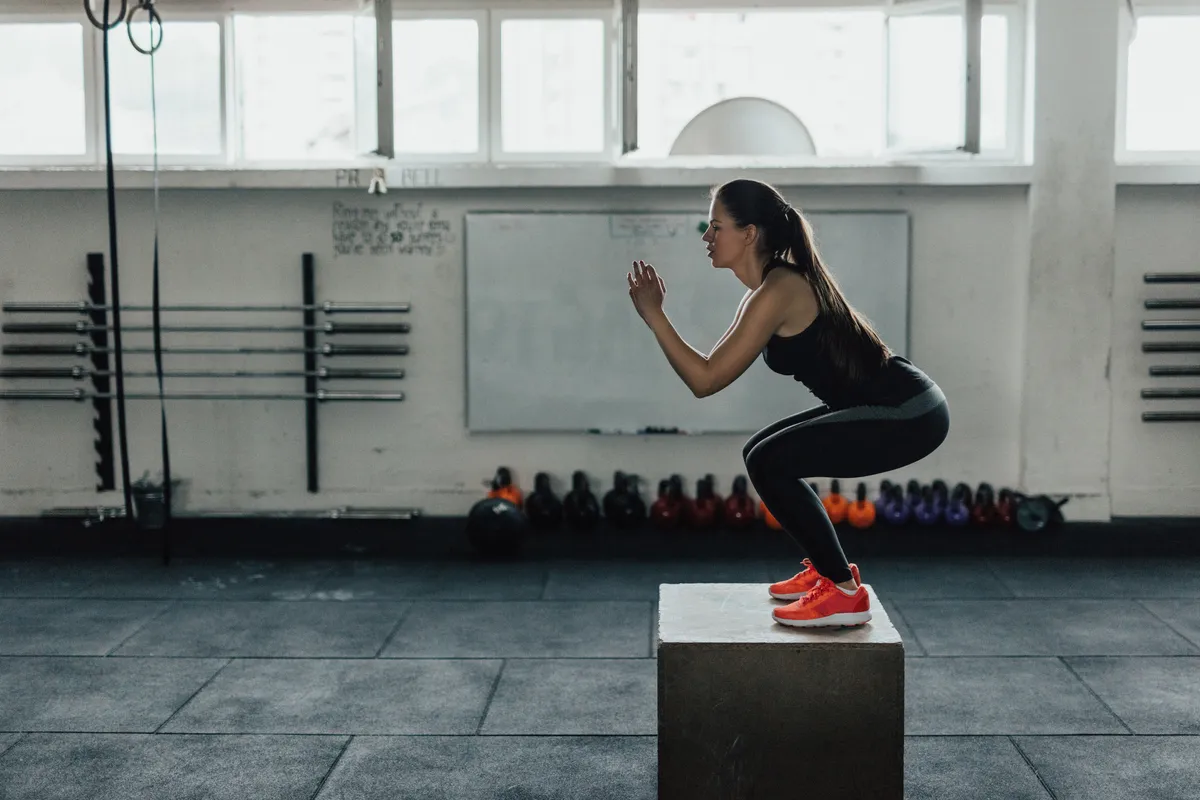
Doing squats is beneficial for cyclists because it helps to keep the hamstrings balanced by working them in a different way to the pedalling action.
As a cyclist, you should aim to squat down fairly low, so that your thighs are roughly parallel with the ground – an angle your legs will be used to through pedalling.
To do a standard squat, begin standing with your feet slightly more than shoulder-width apart.
Slowly breathe in while dropping your weight backwards and down as if you're about to take a seat.
Ensure your back stays straight, breathe out and straighten your legs. Ensure your knees remain in line with your feet, not angling in or out.
Repeat 10-20 times or for 30-60 seconds per leg. Do 2-3 sets leaving 20 seconds between each block.
Move on to single-leg squats by standing one-legged on a block or step with the other leg hanging below the ledge.
Clench your glutes when you bend the working leg – you may need to hold on to something to help balance.
2. Bulgarian split squats
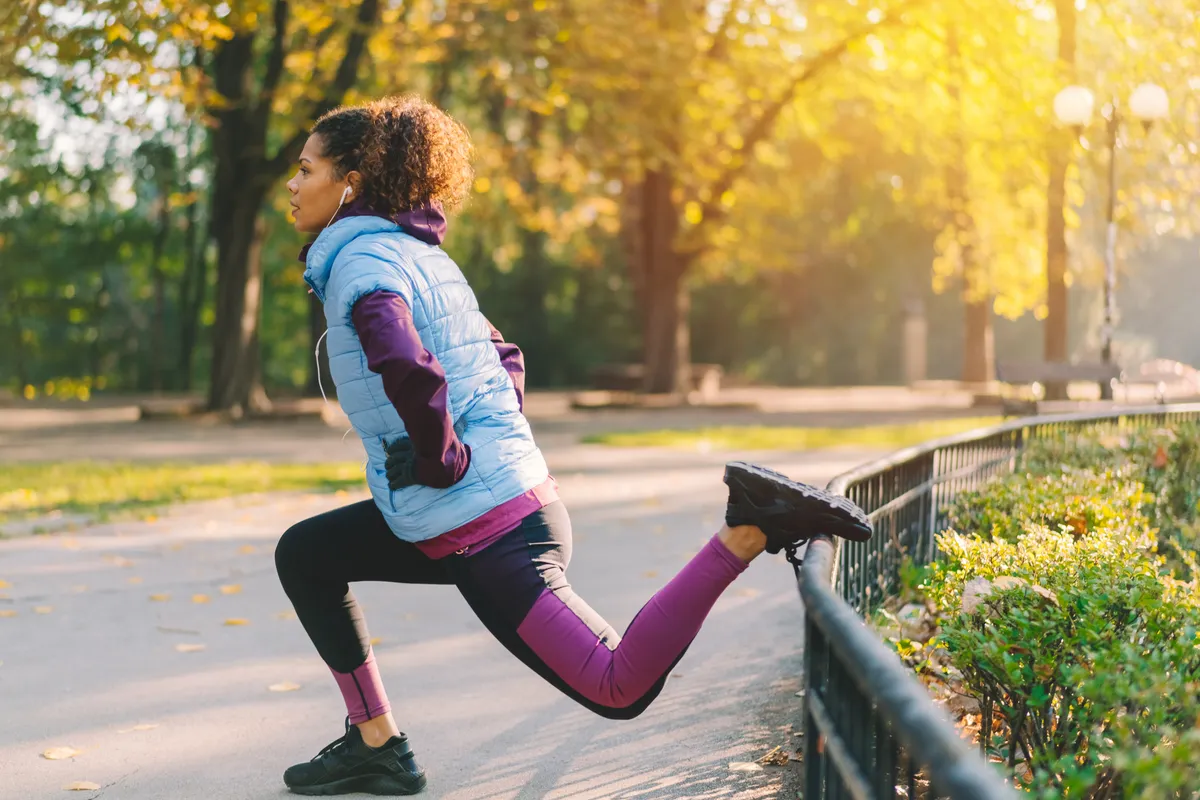
The Bulgarian split squat triggers your glutes, quads and hamstrings, which is fantastic for lower-body strength and flexibility.
You'll require a step, bench or table ideally between 15 and 30cm off the floor to perform a Bulgarian squat.
With the object behind you, take a large step forwards. Then move one leg backwards and place your foot on your platform of choice.
Bend your front leg until your back knee almost meets the floor. Make sure your front heel doesn't lift and your shoulders don't slump.
Straighten your front leg to raise yourself up andclimb repeat 10-20 times or for 30-60 seconds on each leg.
Do 2-3 sets and rest for 15 seconds between each.
3. Yoga squats
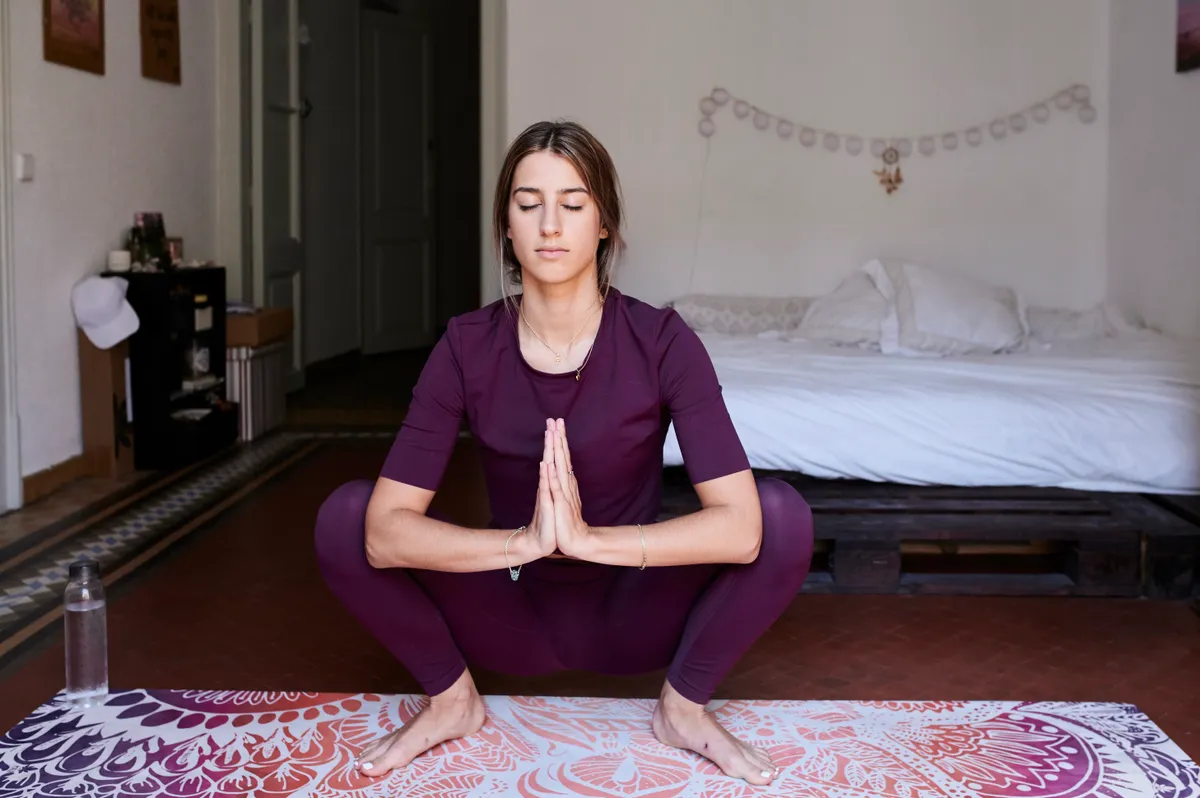
Like simple squats, yoga squats activate your glutes, hamstrings and calves but you drop much lower and have less risk of knee injury.
From a standing position, bend your knees and hips as far as you can without lifting your heels from the floor.
In the crouch, try to keep your feet facing straight ahead. It's fine to angle them outwards if it helps you get low enough though.
Extend your fingertips along the floor ahead of you when you're as low as you can go. Then dip your head and push your hips upwards as far as possible with your fingers still touching the floor.
Now dip back into the squat and raise your head. Pull your hands up and stand upright.
Do 2-3 sets of 10-20 reps.
4. Squat jumps

Squat jumps are a plyometric exercise that can help cyclists to improve acceleration.
From the squat position, jump up as high as you can, as hard as you can, but keep your hands as close to your hips as you can so you don’t create artificial momentum.
Repeat this 15 times in sets of four, doing them quickly and powerfully to build up strength.
5. Romanian deadlifts
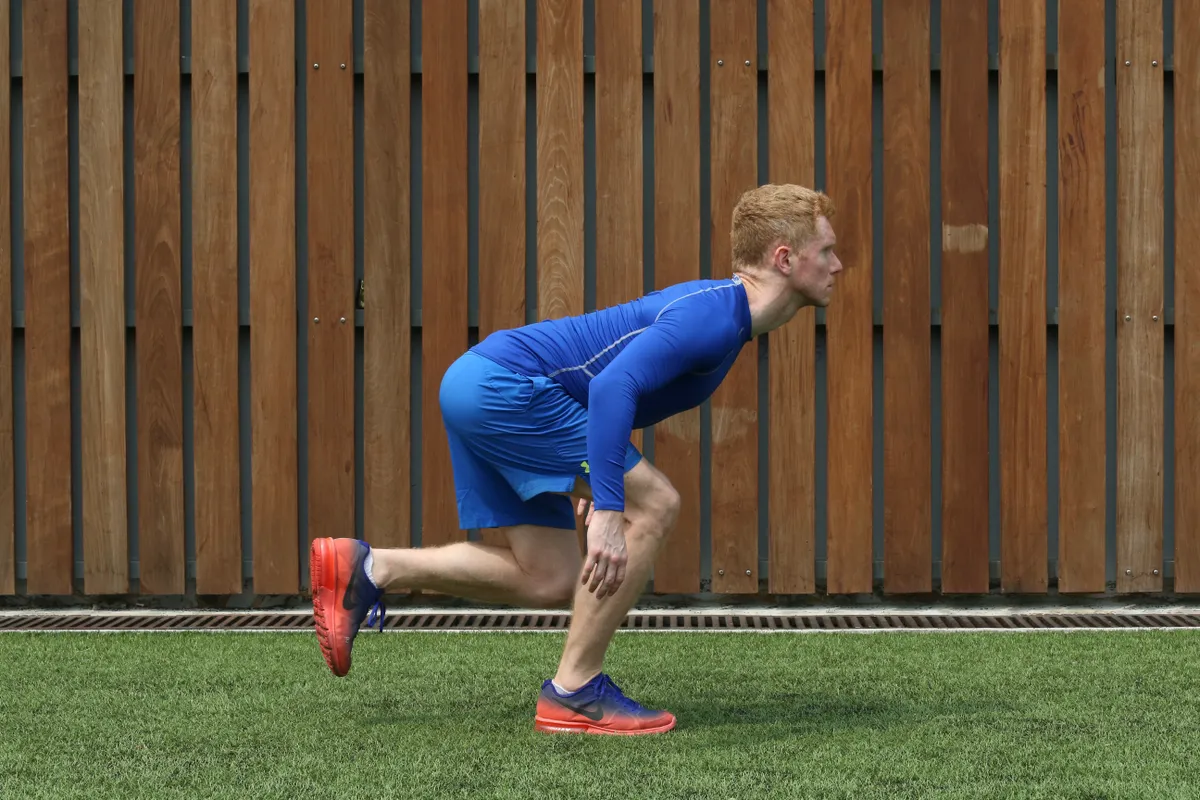
Targeting muscles cycling neglects such as the hips, glutes and hamstrings, Romanian deadlifts also improve core stability.
Stand with a small bend in your knees and your shoulders lowered and dropped. Lean forwards at the hip and press your buttocks back.
Pass your hands down your legs until your knees are forced to flex. Drive back to upright, initially through your heels and then glutes and hips – to do so, it helps to thrust forwards.
Repeat 8-12 times for three sets.
6. Lunges
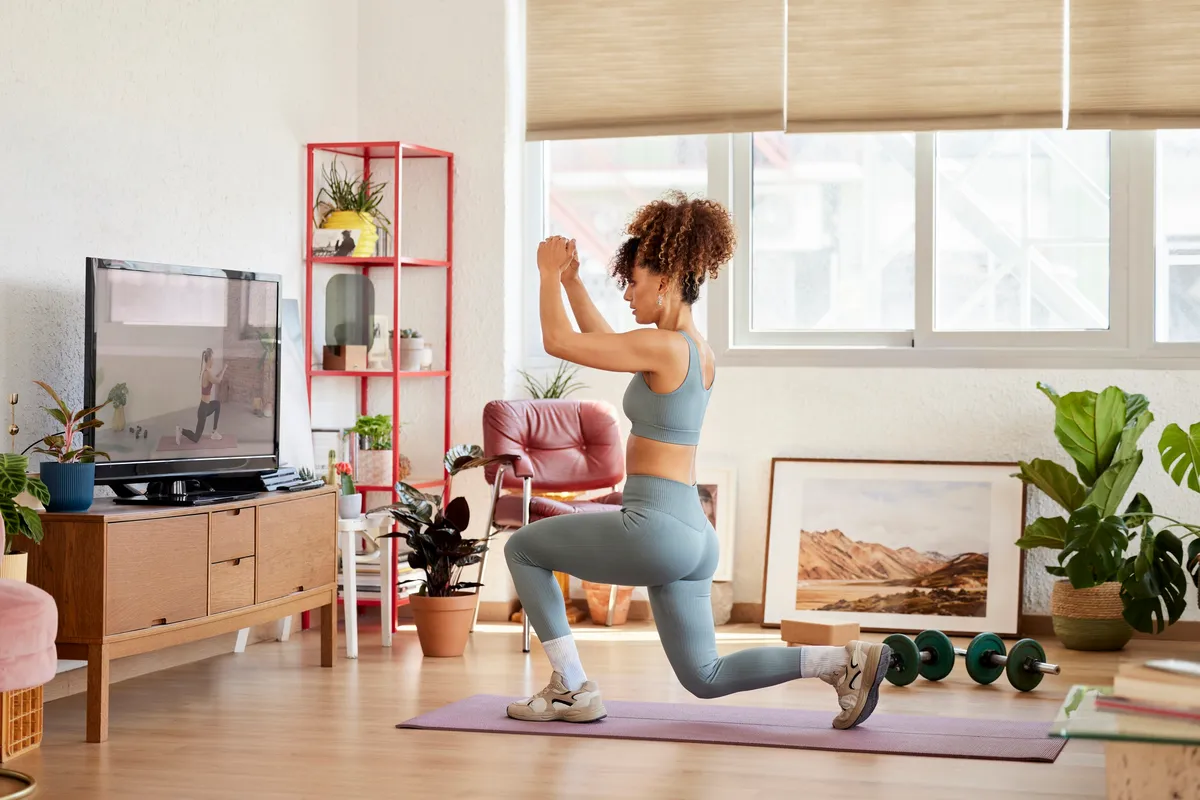
Lunging engages your quads, hamstrings, glutes and calf muscles, so it's an excellent all-round exercise for improving leg strength. Lunges also help iron out any minor imbalances in thigh strength.
Start by standing with one leg slightly in front of the other, then step forward with your right leg so the bend at the knee is 90 degrees.
Keep the weight towards your heels and then bring your body back to a standing position, pushing off the front leg, before repeating on the opposite leg.
Repeat 10-12 times on each leg, rest for 20 seconds and do another set or two.
7. Reverse lunges

This variation on the forward lunge may be better than the original – the movement back to standing replicates pushing up in your pedal stroke on the bike.
Start by taking a long step backwards from standing and then flex your front leg to 90 degrees. Don't let your knee overhand your foot.
Lower your back leg until your shin is perpendicular to and almost touching the floor.
Now drive your back leg up and forwards to the starting standing position.
Do three sets of 8-12 reps on each leg.
8. Jumping lunges

It's advisable to progress to jumping lunges only once you've perfected your lunge technique, due to the injury risk associated with this explosive movement.
Start standing then jump into a forwards lunge. Bound off the ground straightaway, swapping your legs in the air.
Bend your knees to provide cushioning when you land. Ensure your feet and knees stay facing forwards.
9. One-legged pedalling

Start pedalling and then unclip your left foot, holding it clear of the rotation. Pedal for two minutes before switching legs and repeat for three sets.
To start with, you will probably find your movements a bit jerky on the upstroke due to weak hip flexors, but the more you do this exercise, the stronger your hip flexors will become and you will soon find yourself pulling on the upstroke as well as pushing on the downstroke.
Staying stable while pedalling with one leg on a moving bike is challenging – it's safer to do this drill on one of the best smart trainers.
Some indoor cycling apps, such as Zwift, include one-legged pedalling in their winter training plans.
10. Calf raises

Your calves are constantly being flexed and abducted while cycling, so carrying out calf raises on rest days mimics the action this muscle makes on a bike, building its strength further.
Stand on a flat surface with your feet shoulder-width apart and raise yourself up onto your toes in a slow, easy motion, then lower yourself back down equally slowly. Repeat 20 times and do this for three sets.
If you’re feeling keen, you can increase the intensity of this exercise by combining it with a squat, which will work both your thighs and your quads simultaneously.
11. Glute bridge

A glute bridge works all three glute muscles – the medius, maximus and minimus – and lower back, while engaging your core.
Lying on your back, place your feet on the floor near your bum, hip-width apart.
Tilt your hips and push through up your heels until your knees, hips and shoulders align.
Hold the bridge for a couple of seconds before lowering gradually to just above the floor.
Do three sets of 8-12 reps.
12. Single-leg glute bridge

A single-leg glute bridge uses the same glute muscles as the two-legged variant but demands much more of your hamstrings and back.
Start from the same position as the glute bridge. Raise one leg to horizontal and keep it straight.
Lift your pelvis by forcing through the heel of your grounded foot.
Hold briefly at the top and gently lower. Single-leg glute bridges are strenuous, so aim for two sets of 10 reps.
13. Deadlifts

Like Romanian deadlifts, conventional deadlifts can help strengthen your hamstrings, but they can also strengthen your lower back more.
Deadlifts target stabilising muscles in the spine, spinal extensors and glutes. This will aid your ability to produce force through your legs.
Using a barbell or dumbbell, stand with your feet shoulder-width apart.
Bend your knees and hinge forward at the hips and spine, maintaining a flat spinal position.
Pick the weight off the floor and push through your feet, extending through your hips, knees and ankles, until upright.
Perform 3x 12 reps.
Why do I need strong legs for cycling?
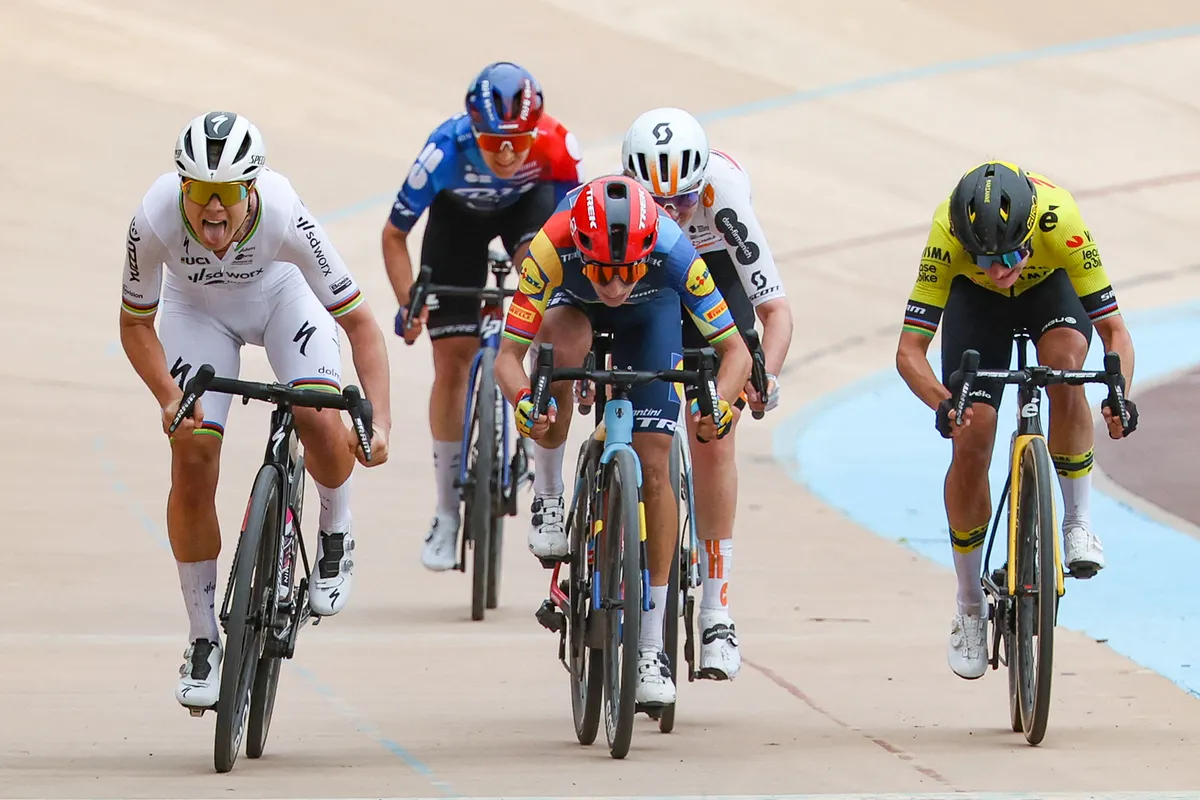
Stronger legs will produce more power: a product of the force (or torque) you put through the pedals and cadence.
Putting out watts will boost your average speed on the flat – and climbs as long as your power-to-weight ratio doesn't drop.
Stronger legs will also fatigue at a slower rate, making them vital for riding further. Whatever your endurance goal – to ride 100 miles or take up ultra-endurance cycling – leg strengthening can benefit you.
Even if you don't want to be an ace sprinter, climber or ultra-endurance athlete, stronger legs help keep niggles at bay.
Cycling uses muscles such as the quads and glutes, which can leave the muscles at the front of your thigh over-developed in relation to your hamstrings, glutes and calves.
Such an imbalance harms your pedalling efficiency and causes stronger muscles to overwork and shorten.
Likely consequences are knee pain, back pain and tight hip flexors, which can lead to injuries when the discomfort escalates.
Why do cyclists have bigger legs?
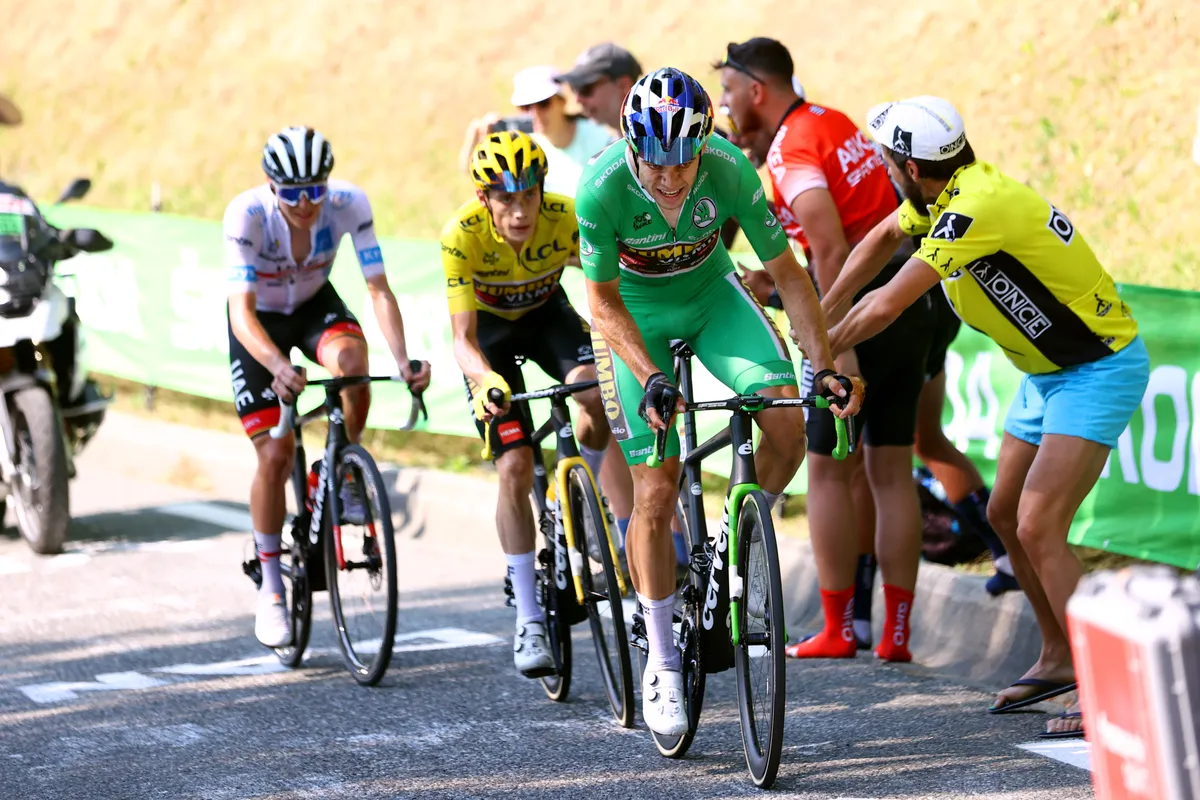
Your leg muscles power the bike and the highly repetitive pedal stroke develops them as you spend time in the saddle.
But the low-intensity, aerobic nature of cycling enhances your cardiovascular system rather than bulking up your legs – you'll need to push heavy weights in the gym and eat a lot of protein for that.
So the legs of the majority of pro riders will be lean and sculpted, but not all that big.
Track sprinters and, to a lesser extent, pure sprinters on the road may have bigger than average legs. They turn big gears at high speed, which requires and builds larger quads and hamstrings.
But road sprinters are endurance athletes after all – sprint finishes come after hundreds of kilometres. Grand Tour fast men and women have to scale the mountains too.
This requirement bars the speedsters from being overly hefty in case they don't make the time limit or are too tired to contest the sprint.
Other types of riders – from time trialists to puncheurs – will have strong instead of big legs, which may look large compared to their otherwise slim physique.
Climbers, typically the smallest of cyclists, may try to reduce their muscle mass because producing, for example, 400 watts in the mountains doesn't call for big legs.
